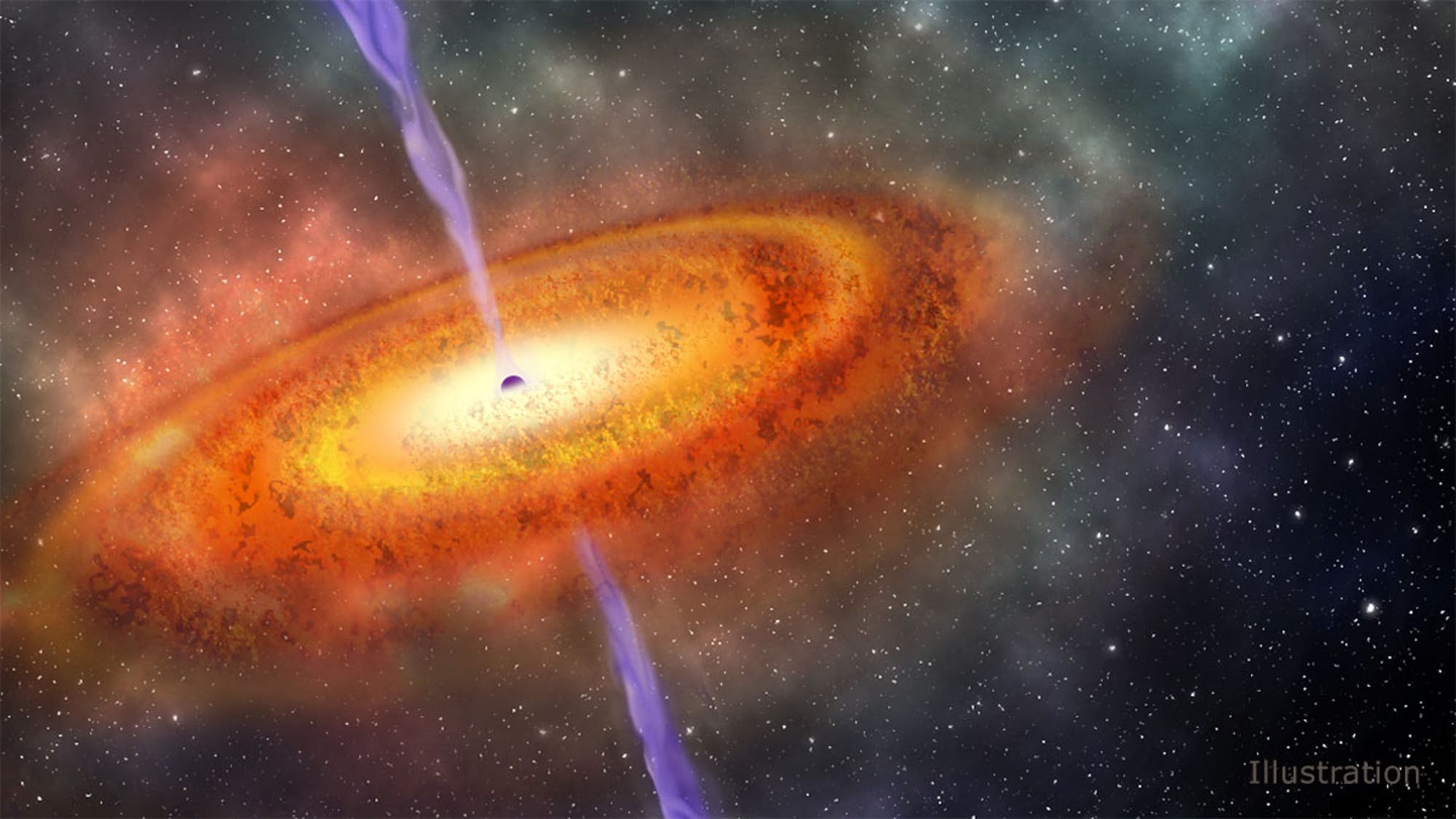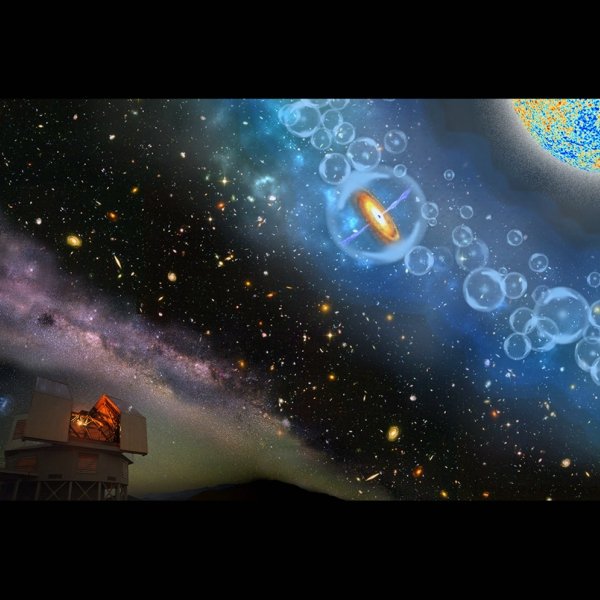It is a total mystery. From where something so huge appeared so early in our Universe? A discovery of the furthest black hole will surely cause concern for a lot of astrophysicists.

A supermassive black hole - Source: Robin Dienel - Carnegie Instituion for Science
There are many supermassive black holes in the universe. Almost every galaxy has one in its core. But the supermassive black hole recently detected by the international team of astronomers is quite exceptional. This beast that is inside of an extremely bright quasar is shining at us from a Universe that was only 690 million years old. And that’s actually a big problem. And I don’t think anyone will be surprised that this was published in the prestigious Nature magazine.

The furthest quasar - Source: Robin Dienel - Carnegie Instituion for Science
It’s not really about the fact that this is the furthest supermassive black hole we ever found. The problem is that such a big black hole should not exist in such a young universe. But… it’s there. It weights about 800 million Suns and astrophysicists are probably just standing quietly in awe and wondering what to do with it.
Experts don’t really even understand how such a black hole could have even been created in an environment where the conversion from neutral to ionized hydrogen was currently happening. And if this isn’t just an equipment malfunction were talking about a black hole created in a half-ionized universe. It was at that time that the first galaxies were being created and first stars started to shine. And Robert Simcoe from the Kavli Institute says that the age of this supermassive black hole might be the most precise estimate of when first stars appeared.

Eduardo Bañados- Source: Carnegie Institution for Science
The lucky hunter who first observed this unique supermassive black hole was Eduardo Bañados from the Carnegie Institution for Science. He was searching for old quasars. First, he selected a few interesting objects and then pointed the FIRE (Folded-port InfraRed Echellette) at them. FIRE is a spectrometer capable of analyzing an object in deep space utilizing their infrared spectrum.
Bañados and his colleagues using the FIRE spectrometer found out that one of their selected objects is a quasar with a z = 7.5 redshift. That means we are seeing this quasar from about 13 billion light-years away. And scientists don’t know how such a supermassive black hole could have been created from for example a collapsing star and grow to such a gigantic size in such a short time. Something like this should be impossible so at this moment nobody really knows how this quasar came to be.
Super black hole = Flat hole #flatholetheory
Downvoting a post can decrease pending rewards and make it less visible. Common reasons:
Submit
This is interesting.... But I don't understand why people spend millions of dollars for looking about a planet ... Can't travel him.... While we are destroying our planet we live in
Spending money in keeping our planet.. Better than spending money in search of an inaccessible planet.
Downvoting a post can decrease pending rewards and make it less visible. Common reasons:
Submit
It's true that space exploration is very expensive, obviously.
The thing is, space exploration has brought us many interesting technologies and eventually (hopefully) our civilization will get to go to space and populate the cosmos. And you need to study space and spend millions of dollars to be able to do that. It's not like you can just wait until the technology is ready without first developing the technologies through baby-steps.
Downvoting a post can decrease pending rewards and make it less visible. Common reasons:
Submit
good post friend I liked a lot I hope you can see my last post, I'll follow you
Downvoting a post can decrease pending rewards and make it less visible. Common reasons:
Submit